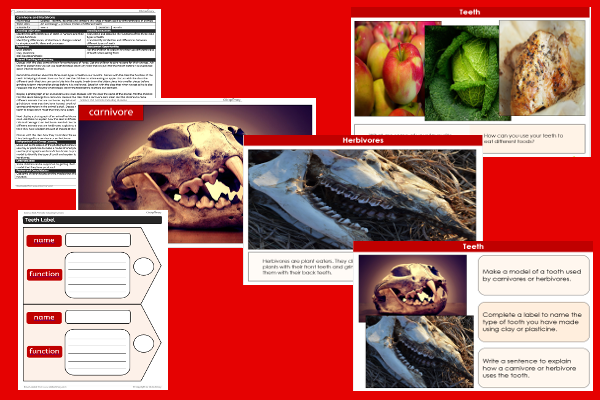Home > Key Stage Two > Science > Year Four Planning > Teeth
Lesson Five – Carnivore and Herbivore

This science teaching pack for Key Stage Two gets the children to identify, describe and compare the range of special teeth that are used for feeding by some different types of animals including carnivores and herbivores.
The class can name and explain the matching functions of the three main types of teeth that can be used by carnivores and herbivores when initially digesting foods.
Download this teaching pack including a lesson plan, classroom activities and an interactive presentation to identify, describe and compare the range of special teeth that are used for feeding by some different types of animals including carnivores and herbivores
Activities in this teaching pack include display posters to identify and describe some of the teeth found in carnivore and herbivore animals and a template to label models of some of the different types of teeth that are used by carnivores and herbivores when initially digesting food.
The interactive presentation can be used to explore and compare the range of teeth that are used for feeding by different types of animals including carnivores and herbivores.
This lesson is part of a science scheme of work to get the children to name, locate and explain the function of some of the different types of teeth that are used in the initial digestion of food inside the human mouth. There are teaching activities for shared learning, differentiated worksheets to support independent learning and interactive presentations to introduce concepts and key skills.
-

Theme Park Visit
Practise identifying and calculating the timing and duration of rides and events when visiting a theme park on a special family trip
-

Family Holiday Trips
Identify and record how to compose and publish recounts using adverbials of time and place to describe family holidays to different places in the world
-

Money Multiplication
Explain and model how to use standard written calculation methods to multiply money amounts in pounds and pence when solving number problems
-

Sport Teams
Explain and model how to use brackets and dashes to add extra information to sentences describing how to play sports and games as part of a team
